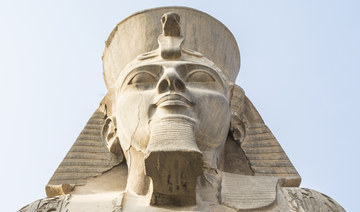ZARQA: Having spent most of his life housebound due to a medical condition, Jordanian Amer Abu Nawas’s love of football has propelled him to social media stardom.
Offering analysis of matches from the leading European football leagues to almost a quarter of a million followers, his Facebook page — “HouseAnalyzer” in Arabic — has grown into what he describes as a “big family.”
The 27-year-old was born with osteogenesis, or brittle bone disease, a genetic condition hindering normal bone growth that has meant he rarely leaves his home in Zarqa, 30 kilometers (18 miles) from Jordan’s capital Amman.
“It is true that I have never played football in my life, and have never attended any match, but for me football is everything,” Abu Nawas told AFP.
With no schools in the country catering to his needs, Abu Nawas grew up spending much of his time watching football matches, analizing the teams and playing football video games.
“This always made me feel like it is taking me from this world to a different one,” he said.
His relatives noticed his passion and encouraged him to publish his match analyzes online.
In 2017, he launched his Facebook account, which now counts more than 243,000 followers.
Filmed on a phone in his bedroom, Abu Nawas’s videos usually feature him wearing a football jersey, excitedly commenting on matches and news from the world of football.
Discussing leagues from England, France, Germany, Italy and Spain, he sometimes uses a football pitch-shaped board to explain tactical nuances.
One of Abu Nawas’s latest videos reached more than 1.4 million viewers and he has started posting on YouTube, TikTok, Instagram and Twitter.
He said he was grateful for modern technology allowing him to connect with so many people.
“From this room, from this small place isolated from the world, I was able to cross these walls, reach people, communicate with them, create content, and become what I am today,” he said.
He expressed sadness at sometimes seeing people attack each other in comments to his posts, and said his relationship with his followers was “like a family.”
“This family is growing day by day, and I hope it will reach as many followers as possible,” he added.
Abu Nawas’s own family do their best to provide him with a comfortable life.
He is the youngest of three brothers and his father is a doctor and his mother a pharmacist.
Inside his room are shelves with a PlayStation, a computer and plastic baskets keeping items he might need.
On his bed are phones, remote controls, headphones and a long stick used to reach distant items.
“He has his own world, in a room with a temperature of 27 degrees to avoid cold and pneumonia. He can operate anything using the remote control,” his father Yussef told AFP.
He said his son has friends who occasionally visit.
“When he feels bad, they take him out for a tour in a minibus,” he said.
Abu Nawas lamented that in Jordan “nobody cares” about people with diseases like his, and said he wished he had had the opportunity to attend school.
“The conditions for people with special needs are catastrophic,” he said.
“I could not learn because there are no special schools for people like me.”
Last year, the organizers of the football World Cup invited him to attend the tournament in Qatar.
But due to travel difficulties linked to his condition, he arrived late and missed the matches he was scheduled to attend.
Even so, Abu Nawas said it was “the best 10 days of my life.”
“I know my condition, I learned to be content, and I will remain so,” he said.
“Disability need not be an obstacle to success.”




























